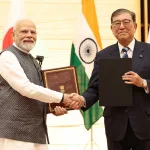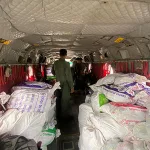“Kashmiriyat” – (a way of life and unwritten code of conduct in Kashmir) is an offshoot of the visionary thinking of those sages who are revered across the land of Kashmir by the Kashmiris irrespective of their religions, be it Kashmiri Muslims (Both Shia and Sunni) Kashmiri Pandits and Kashmir Sikhs as well as people of other faiths residing in Kashmir.
Sufism in Kashmir
Sufism is a path of spiritual advancements, an expansion of consciousness, leading to awareness of self and the universe. The substance of Sufism is selflessness, experiencing and actualization of the truth. The practice of Sufism leads people to the development of innate spiritual and intuitive abilities. Unlike the Saints of mainland India, they promoted the universal language of love and taught how people of different faiths could live together without any faith-based conflict. Nund Rishi was greatly influenced by a female rebel Hindu Saint; a revolutionary woman mystic of 14th century Kashmir, Lal Ded or Laleshwari, who is known through her poetic verses, referred to as ‘Lal-Vaakh’.
Spirit of Communal Harmony
The traditional communal harmony that once existed in Kashmir enabled the peaceful coexistence of Muslims, Kashmiri Pandits (Hindus) and other minorities. The Kashmiri society evolved to be more open to various beliefs, under the influence of Islamic Sufis and Saints of the Rishi order. Some of the festivals in Kashmir which had originated in the Hindu mythology attained a secular character and both Pandits and Muslims celebrated them, birthday of river Vitasta (Jhelum) being one such festival. In 1947 Mahatma Gandhi saw a “ray of hope” in Kashmir when India and Pakistan were facing communal violence at the time of the partition, because there was no communal violence in Kashmir at that time.
Erosion of Kashmiriyat
Three months after the partition of India (Oct 1947), the first attempt was made by Pakistan to annex Kashmir. Several hordes consisting of tribals from North-West Frontier Province, serving officers and soldiers of the Pakistan army, veterans of the British army as well as J&K State Forces, and deserters of J&K State Forces, invaded the State of J&K starting from the night of 08/09 October, 1947 and reached Shaltaing around 13 Kms from the capital city of Srinagar. On 27th Oct 1947 the Indian forces landed in Srinagar and pushed back the Pakistani raiders. For about 20 odd days it was the Kashmiri Muslims who resisted and fought the raiders and got killed too. With wooden rods in their hand they fought with a slogan “Hamlawar khabardar hum Kashmiri hain tayyar”.
The second major attempt to annex Kashmir from India was made in the year 1965, when Ayub Khan was the president of Pakistan, which was code named Operation Gibraltar. The infiltrators, who were part of Operation Gibraltar and were known as Gibraltar Force, were divided into groups and each was to operate in pre-designated area. Once inside Kashmir, members of the Gibraltar Force were to “mingle unnoticed among the crowds” celebrating a festival on August 8 and a political demonstration in Srinagar planned on August 9 to commemorate the 1953 arrest of Sheikh Abdullah. “The raiders were to mingle with the demonstrators and engineer an armed uprising. The raiders managed to penetrate into the suburbs/outskirts of Srinagar and even sniped at the Police Lines. However, the raiders noted that they did not receive local support and “losing patience, set fire to 300 houses” in Batamaloo. Some of the members of this force were handed over to the police by the local Muslims. As the operation failed it is said that the then rulers of Pakistan even said that Kashmiri Muslims are “Brahmin Muslims”.
It was at that time, perhaps, the Pakistani think tank changed its strategy and made a plan to radicalize the Kashmiri Muslims first and take them away from the Sufi culture of Kashmir. Different strategies were made and one of them was to radicalize the people of Kashmir, especially the youth. This was perhaps the master stroke played by Pakistan. Over two decades after the initiation of radicalization the impact surfaced and in July 1988, a series of demonstrations, strikes, and attacks on the Indian government effectively marked the beginning of the insurgency in Jammu and Kashmir, which escalated into the most severe security issue in India during the 1990s.
Kashmiriyat received a major blow since the outbreak of Pakistan sponsored terrorism in 1989. There was mass destruction and massacre of innocents by the terrorists armed and trained by Pakistan, subsequently leading to the mass exodus of Kashmiri Pandits and thereby rupturing the secular soul of Kashmiri society by using religion as a catalyst. The terrorist organizations worked in line with Pakistan’s objectives of destroying the secular and pluralistic fabric of Kashmiri society, and thereby inducing religious extremism. Young generations of Kashmiri Muslims are growing up under the umbrella of a single religion, Islam, and constant fear with no memory of co-existence with other communities while the Kashmiri Pandits continue to live in exile since their exodus from the Valley of Kashmir in 1990, the scattered future generations growing up outside their homeland, being shaped in a different culture with barely any connection to their roots. The unholy alliance of organized extremist ideologies and gun culture has led to the weeding out of remnants of the humanistic culture of Kashmir with its roots deeply embedded in the secular and glorious ancient past, perhaps marking the end of ‘Kashmiriyat’.
Conclusion
Now after over three decades of violence, extremism, uncertainty and instability, the national ethos of Kashmir has been altered and resurgence of feeling of coexistence will only help people of Kashmir to again live in harmony irrespective of their religion for which “Kashmiriyat/ Sufism” need to be revitalized by cross-section of Civil Society. Concomitantly, peaceful resolution to Kashmir’s conflict will require sincere diplomatic agreements between India and Pakistan with the full support of Kashmir’s people/ leadership. The most realistic solution to the Kashmir conflict would appear to be acceptance of the current Line of Control that now divides the former princely state of Jammu and Kashmir as the international border of India and Pakistan.
(Author is a technocrat with over two decade of experience in marketplace having proficiency in business development & Management. As a son of the soil, Jammu & Kashmir is close to his heart therefore keen in setting up symbols of development in Jammu & Kashmir & promote coexistence. Mail ID: [email protected])





